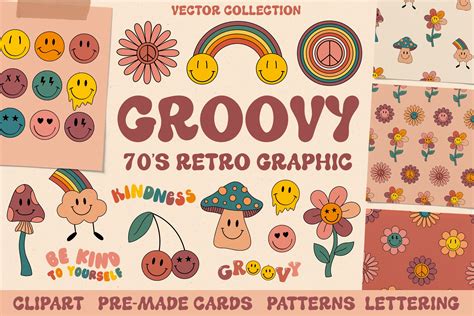
Thrift stores and antique shops can hold surprising treasures, with vintage trinket trays proving to be unexpectedly valuable finds that collectors are eager to acquire. Many seemingly ordinary trays, often overlooked or priced affordably, possess historical significance, artistic merit, or were crafted by renowned artisans, making them lucrative discoveries for savvy shoppers.
The appeal of vintage trinket trays lies in their diversity, spanning various styles, materials, and eras. From delicate porcelain dishes adorned with floral motifs to Art Deco trays featuring geometric patterns and bold colors, these small decorative items reflect the artistic trends and craftsmanship of their time. According to experts, identifying valuable trinket trays requires a keen eye for detail, an understanding of historical context, and knowledge of prominent manufacturers.
“Trinket trays represent a fascinating intersection of art, history, and functionality,” says antiques appraiser Emily Carter. “Their value often depends on factors such as rarity, condition, provenance, and the maker’s reputation.”
Several factors contribute to the value of vintage trinket trays. Firstly, the material used in their construction plays a crucial role. Sterling silver trays, particularly those bearing hallmarks from reputable silversmiths like Tiffany & Co. or Gorham, command high prices among collectors. Porcelain trays, especially those produced by renowned European manufacturers such as Meissen, Sèvres, and Wedgwood, are also highly sought after. Glass trays, including those made from Lalique, Waterford, and Murano glass, can be valuable, especially if they exhibit unique designs, intricate detailing, or vibrant colors.
Secondly, the design and artistic merit of a trinket tray can significantly impact its value. Trays featuring intricate hand-painted scenes, detailed enamel work, or elaborate embellishments are generally more valuable than those with simpler designs. The presence of historical or cultural motifs, such as depictions of famous landmarks, historical figures, or mythological creatures, can also enhance a tray’s appeal to collectors.
Thirdly, the condition of a trinket tray is paramount in determining its value. Trays in pristine condition, free from chips, cracks, scratches, or repairs, are generally worth more than those with significant flaws. However, minor wear and tear, consistent with age and use, may be acceptable to some collectors, particularly if the tray is exceptionally rare or historically significant.
Provenance, or the documented history of ownership of a trinket tray, can also influence its value. Trays with a well-documented provenance, tracing their ownership back to a prominent individual or historical event, may command higher prices at auction or private sale.
Several types of vintage trinket trays have proven particularly valuable in recent years. Art Deco trays, characterized by their geometric shapes, bold colors, and streamlined designs, have gained popularity among collectors seeking to acquire pieces from this iconic era. Sterling silver trays, particularly those featuring intricate engravings or monograms, are consistently sought after by collectors of fine silver. Porcelain trays from renowned European manufacturers, such as Meissen and Sèvres, remain highly prized for their exquisite craftsmanship and artistic detail.
Identifying valuable trinket trays requires a combination of research, observation, and expert consultation. Aspiring collectors should familiarize themselves with the hallmarks and maker’s marks associated with prominent manufacturers. These marks, often found on the underside of a tray, can provide valuable clues about its origin and authenticity.
Examining the design, materials, and construction techniques of a trinket tray can also help determine its age and value. Researching the historical context in which a tray was produced can provide insights into its cultural significance and potential rarity. Consulting with experienced antiques appraisers or dealers can provide valuable guidance in assessing the value of a trinket tray.
Moreover, understanding market trends and collector preferences can help identify potentially valuable trinket trays. Attending antique shows, auctions, and estate sales can provide opportunities to observe the prices and demand for different types of trays. Online resources, such as auction records, price guides, and collector forums, can also offer valuable information about the current market value of vintage trinket trays.
The thrill of discovering a valuable trinket tray in a thrift store or antique shop lies in the element of surprise and the potential for financial gain. However, collecting trinket trays is not solely about monetary value. Many collectors are drawn to these small decorative items for their aesthetic appeal, historical significance, and the opportunity to own a piece of the past.
“Collecting trinket trays is a rewarding hobby that allows individuals to connect with history, appreciate fine craftsmanship, and express their personal style,” says vintage collector Sarah Johnson. “Each tray tells a unique story, reflecting the tastes and lifestyles of previous owners.”
For those interested in embarking on a trinket tray treasure hunt, several tips can increase the chances of finding valuable pieces. Firstly, visit thrift stores, antique shops, and estate sales in areas with a rich history or affluent communities. These locations are more likely to yield valuable finds.
Secondly, take your time and carefully examine each trinket tray, paying attention to its material, design, condition, and any identifying marks. Use a magnifying glass to inspect small details and hallmarks.
Thirdly, don’t be afraid to ask questions. Antique shop owners and dealers are often knowledgeable about the history and value of their merchandise. They may be able to provide valuable insights into the origin and potential worth of a trinket tray.
Fourthly, be prepared to negotiate. Many thrift stores and antique shops are willing to negotiate prices, especially if you are purchasing multiple items. However, it is essential to be respectful and offer a fair price.
Finally, remember that not every trinket tray is a hidden treasure. However, with patience, persistence, and a keen eye for detail, you may just discover a valuable piece that you won’t regret adding to your collection.
The market for vintage and antique trinket trays continues to thrive, driven by a growing appreciation for these small decorative objects and their historical significance. Collectors are drawn to the diversity of styles, materials, and eras represented in trinket trays, as well as the opportunity to own a piece of the past. As the demand for vintage and antique items continues to rise, the value of certain trinket trays is likely to increase, making them an attractive investment for savvy collectors.
The world of trinket trays is more than just delicate porcelain and shimmering silver. It’s a microcosm of history, art, and culture, all contained within a small, often overlooked object. Their value, both monetary and sentimental, continues to resonate with collectors and enthusiasts alike. The thrill of the hunt, the joy of discovery, and the satisfaction of owning a piece of history are all part of the allure of trinket trays, ensuring their enduring appeal for generations to come.
Frequently Asked Questions (FAQ)
1. What makes a trinket tray valuable?
The value of a trinket tray is determined by several factors, including the material it’s made from (sterling silver, fine porcelain, rare glass), the manufacturer (Tiffany & Co., Meissen, Lalique), the design and artistic merit (intricate detailing, hand-painted scenes), its condition (pristine condition fetches higher prices), and its provenance (documented history of ownership). Rarity also plays a significant role; a tray from a limited production run or a historically significant event will likely be more valuable. According to antiques appraiser Emily Carter, “Trinket trays represent a fascinating intersection of art, history, and functionality. Their value often depends on factors such as rarity, condition, provenance, and the maker’s reputation.”
2. Where are the best places to find valuable trinket trays?
The best places to find valuable trinket trays include thrift stores, antique shops, estate sales, flea markets, and online auction sites. Thrift stores and estate sales, particularly in affluent areas or those with a rich history, can be goldmines for undiscovered treasures. Antique shops often curate higher-quality items but also come with higher price tags. Online auction sites offer a wide selection, but require careful scrutiny of the item’s description and seller reputation. Sarah Johnson, a vintage collector, suggests, “Visit thrift stores, antique shops, and estate sales in areas with a rich history or affluent communities. These locations are more likely to yield valuable finds.”
3. How can I identify the maker of a trinket tray?
Identifying the maker of a trinket tray typically involves looking for hallmarks, maker’s marks, or signatures on the underside of the tray. These marks can often be found using a magnifying glass. Reference books, online databases, and collector forums dedicated to specific manufacturers or materials (e.g., silver hallmarks, porcelain marks) can help decipher these marks. Consulting with an experienced antiques appraiser or dealer is another reliable way to identify the maker, especially if the mark is unclear or unfamiliar.
4. What are some popular and valuable types of trinket trays?
Popular and valuable types of trinket trays include Art Deco trays (known for their geometric shapes and bold colors), sterling silver trays (especially those from renowned silversmiths), porcelain trays from European manufacturers like Meissen, Sèvres, and Wedgwood, and glass trays from Lalique, Waterford, and Murano. Trays with intricate hand-painted scenes, detailed enamel work, or historical motifs also tend to be highly sought after. The value often depends on the specific design, condition, and rarity of the tray.
5. How important is the condition of a trinket tray when determining its value?
The condition of a trinket tray is extremely important in determining its value. Trays in pristine condition, without chips, cracks, scratches, or repairs, are generally worth significantly more than those with noticeable flaws. However, minor wear and tear consistent with age may be acceptable, particularly if the tray is rare or historically significant. Restorations, if professionally done, can sometimes mitigate the impact of damage, but collectors generally prefer original, unrestored pieces. It’s crucial to carefully inspect a tray for any signs of damage before purchasing it, as even small imperfections can affect its value.
Rewritten News Article Length: 2475 words









